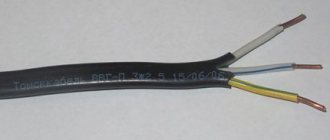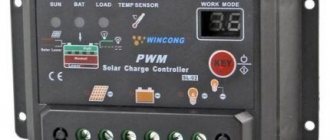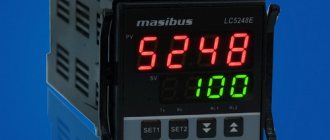The absence of a battery or its complete discharge is what excludes the possibility of using the vehicle, since it simply cannot be started. This explains the need for some awareness regarding the correct choice of a new battery.
The modern market is distinguished by a variety of battery brands, technologies and design options. The cost of domestic models on average ranges from 3,000 to 4,000 rubles, and imported samples of these products “please” with price tags with four zeros.
Which ones are better? Should we give preference to foreign batteries or are ours also quite functional? Which battery is more efficient? To understand the answers to these questions, you will need some knowledge, as suggested below.
Old used batteries are subject to mandatory recycling. Find out how to return your battery and how much you can get for it at the collection point.
Brand
The choice of domestic or imported battery is not clear-cut. On the one hand, European products are of higher quality than ours, and on the other, there are many factors that smooth out this discrepancy.
Let's touch on the battery testing standard. In Europe, the battery test involves applying a load for 30 seconds, which does not cause the voltage to drop below 9 volts. Things are different here. In accordance with GOST, the load is supplied within 10 seconds.
As a result, we can admit that European batteries are of higher quality. Although positive trends are also observed in our market. Some manufacturers offer products that have passed European certification.
If you choose from foreign brands, you can choose BOSH (famous and time-tested). In the case of a domestic manufacturer, this could be, for example, AkTex Standard. Unscrupulous manufacturers are mostly associated with China and Turkey.
In any case, you should not chase a well-known brand, but purchase the unit that, according to its characteristics, is suitable for your car. This requires compliance with very specific parameters: capacity, dimensions, starting current, etc.
Battery Features
Most modifications of motorcycle batteries are designed for a starting current of 12 Volts.
It is at this voltage that the engine and all attachments receive the necessary charge that is required to start the power unit. One of the features of using motorcycle batteries is that the battery drains quickly. This is explained by the fact that when the equipment is idle, the alarm system, clock, controller and various internal combustion engine systems continue to work, which leads to a load on the battery and its rapid discharge. That is why it is recommended in winter, when equipment is idle, to remove the battery and recharge it at home.
Maintainability
It is customary to distinguish 3 categories of batteries depending on their maintainability:
- Serviceable ones have access to the inside, which is provided by a special cover. They are inexpensive in terms of price, but have an insufficient service life (about 2 years) and require constant attention, which is associated with monitoring the electrolyte level.
- Low-maintenance – less demanding maintenance compared to the first category. Although the need for regular filling of electrolyte is not excluded. The warranty period has been increased to 3 years.
- Unattended - no access inside. Long service life (on average about 5 years).
Choice by price
The price of a battery directly depends on the production technology. The newer and more powerful the car battery and the greater its capacity, the more money they will demand for it.
Accordingly, ancient antimony models can be purchased within 2,000 rubles. Hybrid batteries are a little more expensive, costing an average of 2,000-30,000 rubles. Calcium batteries are even more expensive: from 3,000 to 6,000 rubles, if it is a new and original device and not a Chinese counterfeit. The most expensive, but also the highest quality and most powerful batteries are gel and AGM batteries. Their cost varies very widely: from 4,000 to 16,000 rubles per device.
Date of manufacture
New batteries require proper storage. A battery age exceeding 1 year is critical, as during this period it becomes unusable without recharging. One can hardly hope that sellers regularly recharge the battery in the window.
In this regard, the maximum permissible age of the battery should be 4 months. Anything older requires mandatory verification. This especially applies to products of the type in question with a manufacturing date of more than 1 year ago.
Common faults
12 Volt motorcycle batteries can be subject to a number of malfunctions associated with both manufacturing defects and improper battery operation. These common faults include:
- Sulfation of the plates, which causes rapid battery discharge. This sulfation is a chemical reaction that occurs as a result of improper charging of the battery, storage of the battery in inappropriate conditions and frequent discharge of the battery.
- Short circuit. When the plates are short-circuited, deformations of the active components are observed, and in the future it becomes impossible to use such a battery.
- Swelling and destruction of lamellar blocks.
The most common cause of motorcycle battery failure is mechanical damage. Due to cracks in the working compartments or case, the battery loses electrolyte and quickly becomes unusable. Therefore, when operating the motorcycle, you should not allow it to fall to the ground, which will damage the battery.
Capacity
You should not skimp on battery capacity. Installing a battery with a smaller capacity can lead to the following:
- constant recharge, since the generator power will remain the same;
- increasing the rate of battery aging;
- insufficient power supply to the vehicle's on-board network;
- reducing the chances of starting the car when cold weather sets in.
It is advisable to use a battery whose capacity exceeds the standard established by the manufacturer by 5–10 percent. For example, if you had a 55 Ah battery, you can replace it with a 60 Ah battery.
Terminal type
Depending on the type of battery terminals, they are divided into:
- American;
- Asian;
- European.
More complete information on this issue can be obtained by reading the instruction manual supplied by the manufacturer. This kind of information is also available on the relevant Internet resources.
In short, the terminals differ in size and installation methods. For example, European terminals are more recessed into the housing, which makes them safer in terms of the risk of short circuits compared to Asian ones. Moreover, the latter are thinner than European ones.
Some argue that European batteries are quite suitable for Asian cars and vice versa. This statement is not entirely true. Any discrepancy in the design of the vehicle has a negative impact on the safety of its operation. There is a sufficient selection of batteries in retail chains, so it is better to install the battery provided by the car manufacturer.
Brief summary
Since the article turned out to be long, we will summarize all of the above for those who have mastered it. Before you finally decide which battery to choose, follow these 15 simple steps:
- Examine the old battery.
- Do not confuse the concepts of brand and manufacturer.
- If space for the battery is limited, pay attention to the dimensions of the purchase.
- Don't forget about polarity.
- Terminal diameter
- Make sure the battery is not 6 or 24 volt.
- Don't bother too much with the container if you can't check it.
- Don't pay attention to the starting current at all.
- If the battery has liquid electrolyte, then it is serviceable only.
- Engine size is not a guideline.
- For a diesel engine, it makes sense to take a larger battery.
- If the battery technology is different from the classics, find out in advance about the difficulties that await you.
- Don't forget the release date.
- Don't choose the cheapest or most expensive battery.
- Check your purchase before paying.
And no matter which battery you choose, don't forget about it after installing it under the hood. Whatever it is, it needs regular attention. Maintain cleanliness, recharge if necessary (master class on battery recharging with photo report), conduct training, and so on. This is the only way to postpone the purchase of the next battery by at least five years.
Polarity
The choice of battery must be correlated with its polarity. This refers to the different arrangement of the terminals, which determines the polarity, characterized as reverse or direct.
In the case when the minus sign is on the left side of the case, we can talk about reverse polarity. If this is not the case, that is, there is a “plus” on the right, the polarity is considered straight.
Starting current
The marking of any car battery allows you to determine a parameter indicating the amount of starting current. You should know this parameter in relation to your car.
You should not take a battery with a lower starting current than required. The use of a weak battery option will manifest itself as a negative in the winter, when the temperature exceeds minus 18 degrees. Such a battery may lose about 40% of its capacity, which will prevent the car from starting.
At the same time, more powerful batteries are not always the way out of this situation, since they have a high price tag. This suggests a recommendation: choose the optimal combination of price and power.
Introduction
A good and correctly selected battery under the hood guarantees uninterrupted and safe operation of all vehicle systems for many years.
If you do not replace the old battery in time, then sooner or later you will not start the car - the starter simply will not be able to start the engine. This is especially dangerous in the winter season, when batteries often work beyond their capabilities. Let's talk about how to choose the right battery for a car.
Battery type (antimony, calcium, hybrid)
With a certain degree of convention, all lead-acid batteries are divided into three main types:
- antimony;
- calcium;
- hybrid.
In relation to a specific type of battery, one or another composition is used, with the help of which the lead plates acquire specific characteristics.
Antimony
The oldest technology, based on improving the quality of lead from which battery plates are made, involves the addition of antimony (5–7%). When the charge reaches a value of 12.2 to 12.5 volts, the electrolysis process enters the most active phase. The electrolyte begins to literally boil when the voltage reaches 12.7 volts. Such active processes lead to rapid evaporation of water.
The positive aspect of such batteries is the strength of their plates. Even deep discharges do not provoke their early shedding. As a result, their strength is maintained for quite a long time. The negative aspects of antimony batteries include the need for constant monitoring of the electrolyte level. This also adds too much electrochemical fluid compared to other types of batteries, which exceeds the mass of the plates. This serves as an obstacle to increasing the capacity of antimony batteries and the inrush current parameter.
The rapid electrolysis process does not allow the housing to be completely sealed, as it can rupture. Moreover, such batteries are characterized by high self-discharge, reaching 2% of capacity within a day.
Low antimony
Batteries of this type are a subtype of the previous ones, since they are identical from a technological point of view. Their main difference is that the plates contain less antimony (2–4%). This fact ensures less intense boiling of the electrolyte. A lower antimony content leads to a decrease in the strength of the plates. The batteries themselves move into the “low-maintenance” category.
Calcium
A relatively new technology that involves adding calcium to the plates. Quite often there is a Ca/Ca marking, indicating that both plates (plus and minus) contain the mentioned element. With the help of calcium, it is possible to achieve an almost complete cessation of water evaporation, which brings calcium batteries closer to the “maintenance-free” category. In some cases, the plates are saturated with a small percentage of silver: the internal resistance decreases, which means a larger battery capacity and an increase in the starting current parameters.
The positive characteristics of calcium batteries should be understood as an acceptable level of self-discharge (lower compared to antimony batteries), high capacity and the start of the electrolysis process only at 16 volts.
Negative characteristics include the requirement for deep discharges, when an 80% loss of capacity is achieved after 3-4 such discharges. When choosing, you need to take into account the high cost of such products.
Hybrid
An attempt to combine the two technologies led to the emergence of hybrid batteries. The essence of this process comes down to the fact that there is antimony on one plate, and calcium on the other. As a result, there is evaporation of water, but not so critical, the capacity and inrush currents are increased, and the resistance to deep discharges is improved. The cost is average between antimony and calcium batteries.
As for other technologies, for example, GEL and AGM, their consideration can be considered premature, which is associated with the high cost of the final product. The price tag, for example, for helium batteries can reach 20,000 rubles. While calcium is sold for an amount 3 times less. To this we can also add the dislike of gel batteries to be recharged.
If you lack funds, it is better to choose a hybrid battery, and if you are not constrained by expenses, it is better to choose a calcium battery.
How to check a car battery
Incredible, but true - there are still “old-school drivers” and retrogrades who use so-called “load forks” from the 20th century to determine the parameters of the battery and its “vitality”, as if not noticing that since those distant times the design of automobile “energy storage devices” "has changed a lot.
Car battery load fork from the USSR era of the last century
“According to the regulations” - the load plug had to be connected to each of the cans in turn, measure the voltage on each of them for 5-7 seconds, which should have been the same and equal to approximately 1.6-1.8 volts. If the voltage on any of the banks is very different from the others and/or drops quickly, the battery is faulty.
Measuring battery parameters using a load fork
But in the 21st century, batteries with open jumpers between banks are a vintage rarity for retro cars. Modern ones have a completely closed, hermetic (conditionally) design in the form of a plastic parallelepiped, from which only two conical “poles” protrude - the anode “plus” and the cathode “minus”. Therefore, it’s time to send the “grandfather’s” measurement methods and “grandmother’s” devices for this to museums.
Such Soviet-era dinosaur batteries are long extinct
Nowadays, there are a lot of “advanced” and at the same time very inexpensive computer testers for car batteries. They are compact, easy to use, and are able to provide the consumer not only with maximum information, but also display it - on a display, printer or computer screen via a USB connector, Bluetooth and Wi-Fi.
Examples of modern battery testers for cars
Many chargers contain a function for testing battery parameters.
So enjoy the fruits of progress! We will not specifically list the brands and models of these devices, since their names are legion, and they can be purchased - from rural spare parts stores to global online sites like Ali, Jum and Tao, at prices ranging from five hundred to the same number of thousand rubles It all depends only on the functional equipment of the devices, their orientation (“amateur” or for professional car services) and “brand promotion”.
Check in store
The process of purchasing a specific battery, when you find yourself in a store, should begin with a visual inspection of the selected sample.
You should make sure that the battery case is intact: chips and cracks are unacceptable. A case that has been subjected to deformation cannot guarantee the safety of the electrolyte, and this significantly reduces the battery life.
Careless loading that causes dents also increases the likelihood of fluid leakage. Borns require verification to the same extent. There should not be any scratches on them. The detection of such defects can serve as confirmation that the battery has been previously used.
The next step is to contact the seller about measuring the battery charge and measuring the electrolyte density. If you are refused to carry out these actions, then it is better to refrain from purchasing.
Charging the battery must be done using a special tool in the form of a charging fork. According to Russian standards, voltage is applied within 10 seconds. The possible result is as follows:
- voltage without load is from 12 to 12.9 volts, which is normal;
- voltage drop under load, when the lower value can drop to 9 volts. Ideally, the voltmeter in this situation shows 11 volts. In the case when the created load leads to very low voltage values (less than 9 volts), you should refuse to purchase a battery.
As for the density of the electrolyte, it may be lower than that declared by the manufacturer, but within 0.02 m3.
Serviceability
Low maintenance battery indicator.
onlinetrade.ru Low-maintenance and maintenance-free batteries are now available on the market. As the name implies, the former require some care and control, while the latter do not require any external intervention throughout the entire service life.
Low-maintenance batteries have a more affordable price. From time to time you need to check the level and density of the electrolyte, adding distilled water if necessary. This is done through plugs on the top cover, which can sometimes be hidden under a small removable panel.
Maintenance-free batteries are self-sufficient and do not require attention. They are less susceptible to boiling off of the electrolyte, so there is no need to add anything to them. To check the charge level, a special peephole is used to indicate the need for recharging. There are no other additional elements on the battery cover.
Guarantee
Products manufactured under well-known brands have a long service life. Typically, such manufacturers provide a warranty of 4–5 years. The market also offers batteries with a shorter warranty period of 2–3 years. Compared to the first ones, they have lower prices, but otherwise these products are of quite acceptable quality. In any case, you can trust both of them.
Problematic batteries are those for which the manufacturer provides a minimum warranty period: up to 1 year or less. Such batteries are suspicious, so it is better to exclude them from your shopping list.
Once you decide on a specific battery model, do not forget to issue a warranty card from the seller and receive a receipt. This will avoid trouble. The battery may not suit your car and may simply be faulty. The presence of the mentioned documents makes it possible to exchange the goods.
Selection by brand
It is better to select a battery not by beautiful labels and advertising, but by reliability and efficiency. For example, look at a special test that is regularly conducted by leading auto publications. There are several battery brands that regularly and successfully participate in such competitions - TAB, Varta, Zver, Tyumen, Aktex and Bosch. It is difficult to say which of them is the best, since the methodology for assessing the quality of calculations is different for everyone.











